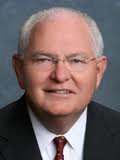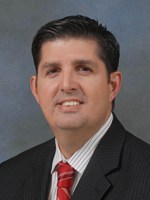It’s an idea gaining momentum in Florida this legislative session: letting a few district schools choose curriculum, lease buildings and enjoy wiggle room when it comes to class size.
Sound familiar?
The concept, coined “district innovation schools,’’ would allow high-performing public schools to operate with some of the same freedom that has helped many charter schools succeed.
Assuming the legislation passes – and its odds look good at this point – it remains to be seen whether the innovation schools can carve out flexible terms during collective bargaining with teachers unions – like, say, having more power over hiring and firing. But even if that doesn’t happen, some observers said, the added leeway still could make a difference.

“We’ve learned a lot from charter schools,’’ Sen. Bill Montford, a Tallahassee Democrat and the bill sponsor, told redefinED. “They have been able to think outside the box.’’
Montford is a former Leon County superintendent and CEO of the Florida Association of District School Superintendents.
Charters are funded by taxpayer dollars, but have their own governing boards and power over personnel decisions. They also can meet the state’s stringent class-size mandate for core classes on a schoolwide average instead of class by class – something districts must do or pay hefty fines.
The result, some say, is charters can be more innovative, creative – and academically successful.
Montford’s Senate Bill 1390 allows each district to have one innovation school to start, and up to seven if the model proves successful. To be eligible, the district must have at least 20 percent of its total enrollment in choice programs or at least 5 percent in charter schools.
It also must have had an A or B grade for the past three years.
In return, innovation schools could decide what they want to teach and offer additional assessments beyond state-mandated tests, Montford said. They could lease buildings instead of building new schools, bypassing some state facility requirements that don’t affect student safety. And they could have more students in some classes than allowed by the class-size amendment.
One thing district innovation schools won’t be able to do like charters, though, is negotiate with unions outside of collective bargaining agreements, Montford said. However, that shouldn’t get in the way of innovation, he said, adding, “I think they will have the ability to put anything on the table.’’
Mike Kooi of the Florida Department of Education’s school choice office agreed it wouldn’t hinder innovation completely. But being able to make decisions without the formal process of bargaining does have its advantages: Among other things, it could speed up the process of letting go of poor-performing teachers and allow administrators to pay more to attract top educators, he said.
“Obviously, they need to work in whatever parameters the law requires,’’ Kooi said. “It may be a little less flexibility in personnel decisions, but the law would provide them with other flexibilities like a charter.’’
In Polk County, where the school district has experimented with developing its own charter-like schools for struggling students, the union experimented with its contract as well.
The agreement offers some latitude for start times and curriculum, said Marianne Capoziello, president of the Polk Education Association. It also has a provision that allows administrators to bring issues to the bargaining table as they arise.
“It’s a fallacy to say innovation cannot happen because of unions,’’ Capoziello said. “We care about education and innovation, too, and want the best system – but it has to work for students and for educators.’’
House Bill 7029, known as the Digital Learning Bill, also has a provision creating innovation schools that’s nearly identical to Montford’s. Filed by Rep. Manny Diaz, Jr., R-Hialeah, the bill calls for the same flexibility outlined in the Senate’s version.
But Diaz’s bill specifies a district innovation school is one that already has adopted blended learning models on a schoolwide basis, like the flipped classroom which lets students watch online instructional videos at home and practice the concepts in their classroom. The idea is to have teachers acting more as facilitators, guiding students and overseeing tests.

“We’re moving toward student-based competencies – not seat time,” Diaz said. But, “the district has to be ready to do this,” he added, “because the costs associated with getting tech-ready “are not costs the state is going to take on.”
Both bills are headed to the floor, where they likely will merge before a final vote, Montford said.


